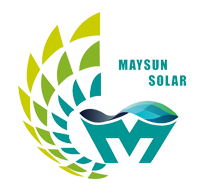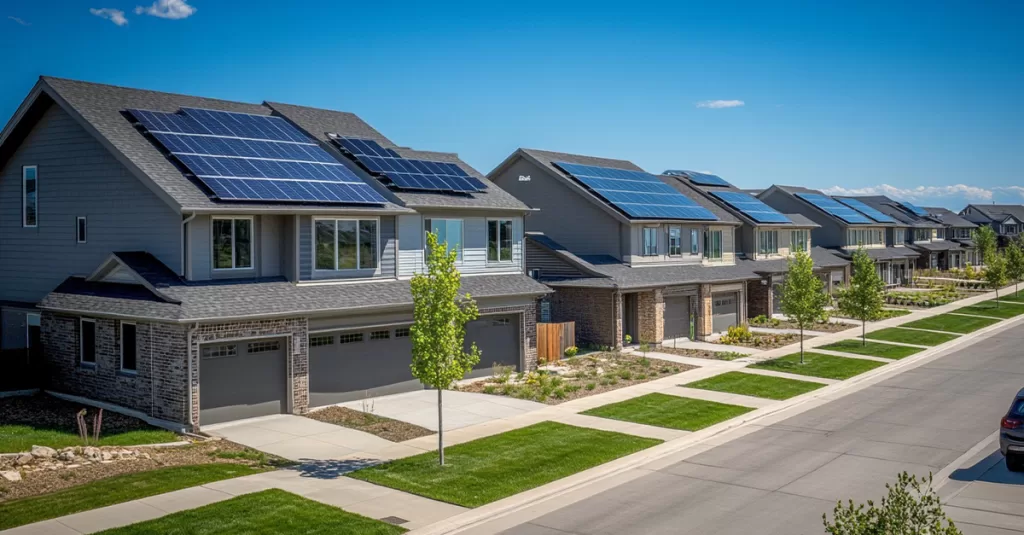Standard Solar Panel Sizes
There are two common configurations for traditional solar panels: 60-cell and 72-cell panels, with the following dimensions:
- 60-cell solar panel: 1.635 m² (1.65m x 0.991m)
- 72-cell solar panel: 1.938 m² (1.956m x 0.991m)
Note: The market now offers larger panels with higher efficiency. However, this article focuses on 60-cell and 72-cell panels as examples.

One of the first questions customers ask when selecting solar panels is: “Where will I install my system?” Solar panels require significant space, and not every roof has enough room to accommodate them.
Each solar cell, the smallest unit in the photovoltaic process, typically measures 156mm x 156mm. The operating voltage of a single solar cell is approximately 0.5V, so they cannot be used individually. These cells are connected in series and parallel to form a solar module.
- A 60-cell panelarranges the cells in a 6×10
- A 72-cell panelarranges the cells in a 6×12 grid, with the cells generally measuring about 3–4 cm in height.
Note: Nowadays, the most common solar cell sizes are 166mm, 182mm, and 210mm.
The sizes mentioned above (60-cell and 72-cell) are the most common for residential and commercial installations, with a small margin of space on the edges of the panel (due to variations in frame size from different manufacturers).
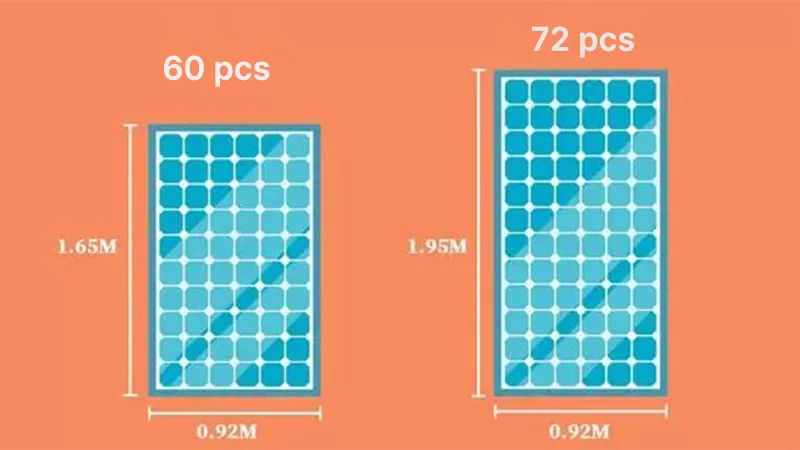
How Many Solar Panels Can Fit on My Roof?
In the residential solar market, high-power panels, such as 490W, 535W, and 550W models, are commonly used. These high-efficiency panels help maximize the use of limited rooftop space, increasing the energy yield per square meter.
The available space on your roof determines how many panels you can install. To give you an idea, approximately 8 square meters are needed to install 1 kW of solar capacity. So, for a 15 kW system, you would need about 100 square meters of roof space.
Here’s an example of the number of panels needed for a 15 kW residential solar system, using both high-power and lower-power panels:
- 15,000W ÷ 490W ≈ 30 panels
- 15,000W ÷ 330W ≈ 45 panels
Comparing Panel Sizes
To understand how the choice of panel affects the space occupied by the solar array, let’s compare a 330W panel with a 490W panel:
- 330W panel size: 1855mm x 1092mm x 40mm
- 490W panel size: 2187mm x 1102mm x 35mm

In general, a standard residential solar system will require 100–200 square meters of roof space. This system can be installed on your roof or on ground-mounted racks on your property (e.g., on a flat roof or carport). The exact size will depend on the panel wattage and the layout of the array.
Portable/RV Solar Panels
If you are purchasing solar panels for a boat or RV, the size of the panels will be smaller to fit the limited space available. Although some standard-sized panels are used for certain vehicles or boats, most boats and vehicles don’t have enough space for full-sized panels. Therefore, smaller panels are often required, typically providing 12V or 24V output for easy use in mobile settings.

Weight of Solar Panels
In addition to size, the weight of solar panels is another common concern for customers. Moving solar panels onto a roof can be challenging, especially if you are working alone. The weight of a standard, full-sized solar panel typically ranges between 18-35 kilograms. The exact weight varies depending on the manufacturer and the model of the panel.
This information should help you understand how much space and weight are involved when planning your solar system installation. Whether you’re installing a large rooftop system or setting up a mobile solar solution, choosing the right panel size is key to optimizing your system’s performance.
Since 2008, Maysun Solar has been dedicated to producing high-quality photovoltaic modules that contribute to combating climate change. Our advanced technology in IBC, HJT, TOPCon, and balcony solar panels ensures exceptional performance and reliability, capable of withstanding harsh weather conditions for long-term operation. We have established offices and warehouses in multiple countries and built lasting partnerships with top installers to provide comprehensive support. For the latest quotes or any inquiries related to photovoltaics, feel free to reach out to us—we’re here to help!
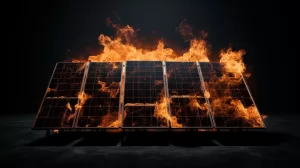
Photovoltaic Fire Safety Guide: How to Reduce the Risk of Power Plant Fires?
The risk of fire in photovoltaic power plants is on the rise. This article, based on European policy standards, provides a detailed explanation of design optimization, operation and maintenance strategies, and emergency response measures to enhance fire safety levels.
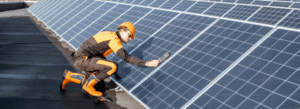
How to Design Low Maintenance High Yield Commercial and Industrial Photovoltaic Systems
How to build low-maintenance high-return photovoltaic plants This article analyzes the cost challenges and optimization paths of commercial and industrial photovoltaics in Europe helping enterprises achieve payback within 5–6 years and steadily increase long-term returns
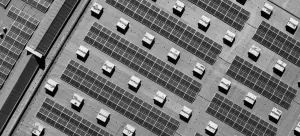
How Building-Integrated Photovoltaics (BIPV) is Changing the Commercial and Industrial Rooftop Solar Market
BIPV in Europe is reshaping the landscape of commercial and industrial rooftop photovoltaics, integrating building and power generation functions while offering policy incentives, economic returns, and ESG value. This article analyzes the advantages of BIPV in technological innovation, business models, and investment returns, helping enterprises seize the opportunity for green transformation.

How to Effectively Clean and Intelligently Maintain Photovoltaic Systems for Optimal Performance?
Explore how scientific cleaning and intelligent maintenance can ensure the efficient operation of commercial and industrial photovoltaic systems. Practical advice covers module cleaning frequency, monitoring system configuration, and long-term strategies for energy savings and performance enhancement.

2025 European Photovoltaic Policy Map: Deployment Paths and Regional Strategies for Commercial and Industrial Photovoltaics
A comprehensive analysis of the 2025 European commercial and industrial photovoltaic policy map, focusing on deployment strategies, incentive comparisons, and zero-investment models to support businesses in achieving an efficient and green transition.

Empowering Factories with Solar Energy A Strategic Tool for Controlling Production Electricity Costs
Commercial and industrial solar is becoming a key solution for factories to reduce electricity costs and hedge against price fluctuations. This article systematically analyzes its deployment models, cost advantages, and sustainable value pathways.
